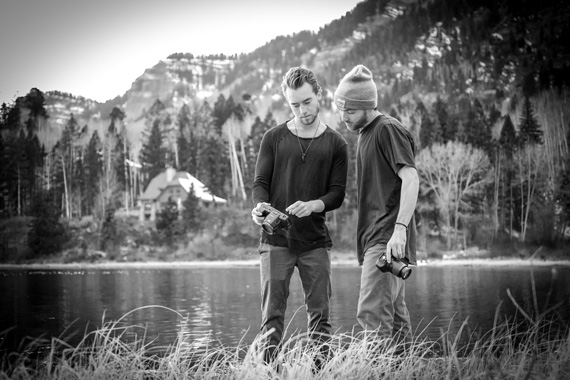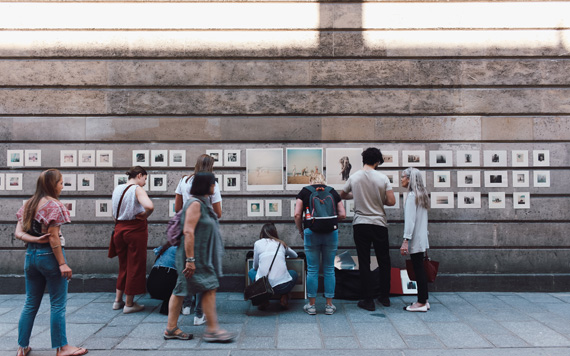Most of us have received critiques of our work at some point of our life. Some of the most subjective feedback is that directed at works of art. Photography is no exception.
With a lot of people picking up photography as a hobby, it’s no wonder that a lot of photography related forums are created with the purpose of sharing. And one of the popular subjects of these groups is critique, where members get to give “constructive” comments with the hope that it will help the image maker. The reverse is also true where a photographer posts his best shot and hopes to get constructive and helpful criticism in order to learn from the more experienced photographers.

Photo by Woody Kelly.
When I took a course on image analysis with the Photographic Society of America (PSA), when I first started photography, the most important aspect I learned about giving constructive feedback is to put it forth as my own point of view.
Why is this “own point of view” so important?
Photography is so subjective that an image can gather equal amount of “likes” and “dislikes” at the same time. My tutor told me that it is subjective to the point of being ridiculous. Each and every one of us perceives beauty in our own way. Not just beauty, but almost everything in life, right? Some of us like eating steak, while some would rather stay away from meat. Some of us like to remain single, while some would rather marry and have 10 children.
That being said, the image maker, too, perceives beauty differently from the one critiquing the work. To the one posting the image, it might be his best shot and he thinks of it as being perfect. I’ve been there when I started photography. I thought what I’d shot was very good. Boy was I wrong. If I were to look back at my very first batch of photographs, I would be appalled and would give myself the harshest of critiques. But hey, we were all once amateurs. And everyone is learning all the time and wants to improve. So the main thing is not to belittle anybody, because we were most likely in their shoes at some point.
So, if we don’t have the “eyes” now to critique and comment on our current work, what better way than to ask those who have been there done that. A word of caution: when you put your work out there in the open, be prepared and open minded to receive comments and criticism from those who have not been there done that.

Photo by John Schnobrich.
Sometimes, you can get ideas spinning off from even those who are very new to the art of photography.
Back to the subject of “own point of view,” it’s imperative that we start off our critiques with preambles. Not those legal mumbo-jumbo kind of preambles, but something as simple as, “In my opinion…” This is to tell the reader that whatever is going to be said is purely your own opinion. It’s nothing personal.
Avoid Rules
What I’ve learned from PSA is to look at different aspects of photography when giving criticism and comments. And also avoid rules like the rule of thirds. Stay away from these rules of photography when giving comments, because they’re not prerequisites when making a photo. Nothing is ever fixed in the world of art. Why should it be? We would live in a world of zero creativity if everything was so rigid. So stay away from giving comments like, “It would be better if you had used the rule of thirds to compose this image.”
Oh yeah, and stay away from, “It would be better… ” and the super imposing, “If I were you…”

Photo by Adrian Cabrero; ISO 100, f/2, 1/2000 exposure.
What to Look for in a Photo
What are the aspects to look for? Here are some…
- Creativity
- Originality
- Noise and/or Grain
- Composition
- Line
- Eye Movement
- Lighting
- Focus, depth of field
- Exposure
- Dimension
- Perspective
- Tonal Range
- Color
- Impact
- Balance
During the course, I was asked to comment on one of Henri Cartier-Bresson’s most revered images. I didn’t know this person or his work at that time. So I just gave my comments. Luckily for me, I started off the critique with, “I think… “, “In my opinion… “, and “To me… ” Only when my tutor told me that prints of the image are being sold at galleries for $10,000 each, and that it is okay to comment as long as it is our opinion, did I begin to reflect upon the fact that art is so subjective.
In essence, write your comments with the preamble, be nice with your words, and never be a jerk.
Another note in “courteous” critiquing would be to separate our good comments and suggestions. Try to put across all the good points first, then give your suggestions. Do not say something like, “I personally feel that the image is well done, but…”
It’s the BUT that is the pain in the BUTT.

Photo by Tetiana Shevereva.
Say your suggestions separately, so that the image maker can keep all the positive comments and then learn from the critique.
And last but not least, although sometimes it’s better to keep quiet if what we are going to say could potentially offend someone, it’s also important to note that constructive criticism can teach us a thing or two about our own work. Most of the time saying what we already know reinforces our knowledge and can open doors to new knowledge. Do it with tact and humility.
Someone once said that we don’t live long enough to be anything but amateurs.
So when putting across what you think, say it like you know it, but make it sound like you know nothing.
Good luck!
About the Author:
Fauzi Anuar (https://www.zeeandmarina.com/) is a qualified master photographer (AMPA) specialising in portraiture, interiors and food.
Like This Article?
Don't Miss The Next One!
Join over 100,000 photographers of all experience levels who receive our free photography tips and articles to stay current:






Great article and a good reminder that well meant words may be interpreted differently by the recipient.
I like the idea to separate “observations” from “suggestions”. Not just for the reasons you mentioned but also because “suggestions” may unintentional lead to modifying the photo to the liking of the author. But then it becomes his art instead of the recipients art
Thanks for your great article
Just because a photo is made by a “great” photographer and sells for a lot of money doesn’t mean it’s always a great photo or couldn’t be improved. Sometimes we suffer from “the emperor has no clothes” syndrome when it comes to the “great artistes.”
The Importance of Constructive Feedback in Photography: The article is candid and refreshing. On the section ‘What to look for in a photo”, I think this one item may be added, perhaps at par with composition: Is it clearly conveying a story or message?
Warm Regards from Mauritius